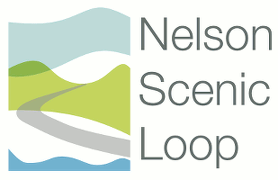It was organized in 1845 and built about 100 yards south of the brick building that housed the Jonesboro Free Church. The first church was a frame building of rectangular shape. A gallery around the two sides and one end gave additional room when needed. Steps on each side led to the gallery. A door on each side of the front of the building led into the sanctuary. The center row of pews had a division through the center form the back of the church to the front. The ladies always sat on the left and the men on the right side of this division.
In 1857, aware of that the old building was in a decaying state, Reverend Thomas W. Roberts, and members began to raise pledges for a new house of worship. This frame building was to be erected on a plot donated about 1858 by Dr. Thomas Massie of Blue Rock. The same site the present building occupies was practically the same spot on which this second building stood. The frame for the building was erected when all work ceased for the Civil War. A storm blew the building over with such severe dames, that following the Civil War it had to be re-cut and erected the second time. It was not completed for eighteen years.
In the fall of 1878, the final construction of the building was completed. The walls were whitewashed, church blinds corniced, the pulpit furniture painted the grounds enclosed with plank fence, and a grove made suitable for outside worship in 1879. By 1893, work was begun to enclose the church grounds to protect the building from abuse from the public highway.
Years later, the church realized the need for more space. W.R. Burnham, an architect from Lynchburg, surveyed and drew plans for the building in 1913. Church members were to lay all foundation stones from the old building and haul all materials from the Arrington depot. After the old building was torn down, the church met at Fleetwood High School and the Odd fellows Hall in Massies Mill for a short time. In April 1914, The Sunday School Auditorium was ready and used for worship. A memorial window in the choir of the present church bears testimony to the regard for Brother Martin, pastor from 1883 to 1898.
